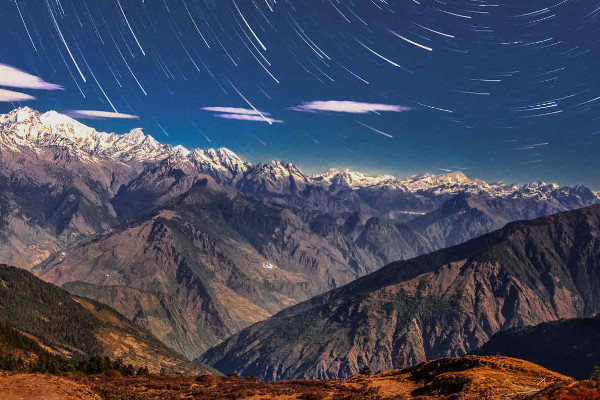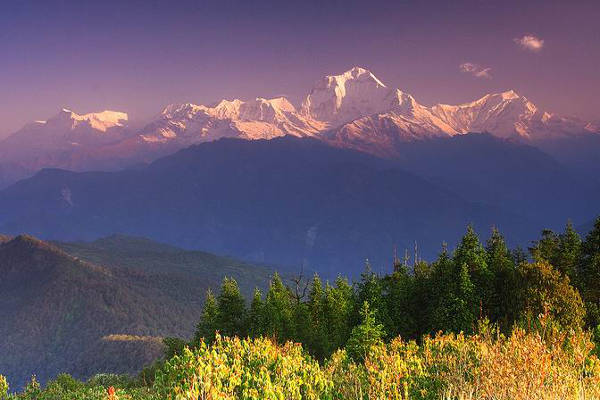The Langtang Valley Trek is a relatively easy trek and is often far less busy than other popular treks in Nepal. The trek can be done in seven days; however, it usually takes 10 to 12 days.
On this page, you will find a comprehensive and impartial guide to the Langtang Valley Trek.
Langtang Valley Trek
Route Overview
The famed British mountaineer and travel writer, Bill Tilman (1898-1977), called this “one of the world’s most beautiful valleys.”
The local people in the Langtang Valley are mostly of Tibetan origin and, according to legend, the valley was first discovered by a lama – a teacher of Tibetan Buddhism – who was pursuing a runaway yak. “Lang” is Tibetan for “lama” while “tang” is Tibetan for “follow.”
The highlight of the Langtang Valley Trek is the sight of the Langtang Lirung range, which is simply stunning. The eponymous mountain is 23,773 feet high and dominates the valley.
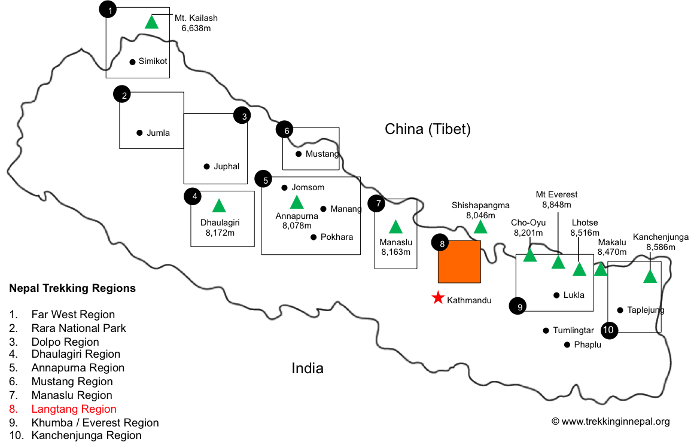
Langtang Regional Map
The Langtang valley region is in central Nepal, around 19 miles directly north of Kathmandu and near the border with Tibet. Although close to Kathmandu, closer than any other trek, this is as wild as it gets.
As you can see from the map above, the valley runs from east to west, sandwiched between the Himalayas to the north and the slightly lower Langtang Lirung range to the south.
Langtang Recommended Map
We believe the best map of the Lantang region is the Langtang & Helambu Map of the GHT which can be purchased online via Amazon. The map is produced based on data collected from the National Geographic Information Infrastructure Programme (NGIIP).
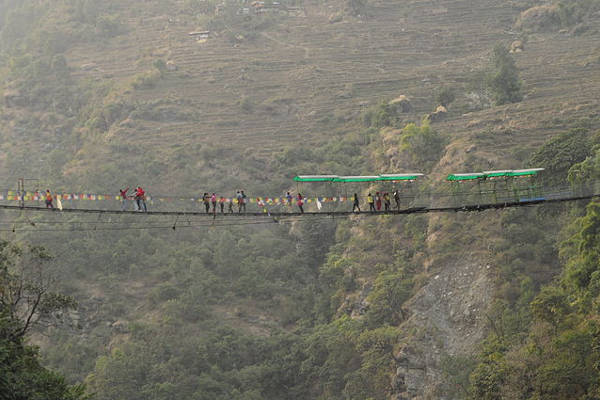
Langtang Trek Itinerary
It is possible to conduct this trek staying only at tea houses, but there is some time under canvas in this particular itinerary. There are several trek itineraries for this route, however, the one below is the most popular. You could also possibly arrange to meet your operator in Syabrubesi if you want to make your own way there.
Day 1-2: Arrive Kathmandu
You will arrive in Kathmandu on the first day.
You have the second day to spare while the provider arranges things. Kathmandu is a UNESCO World Heritage Site, so you could use the time to explore some the incredible local sites. Or you could do some last-minute shopping around the markets.
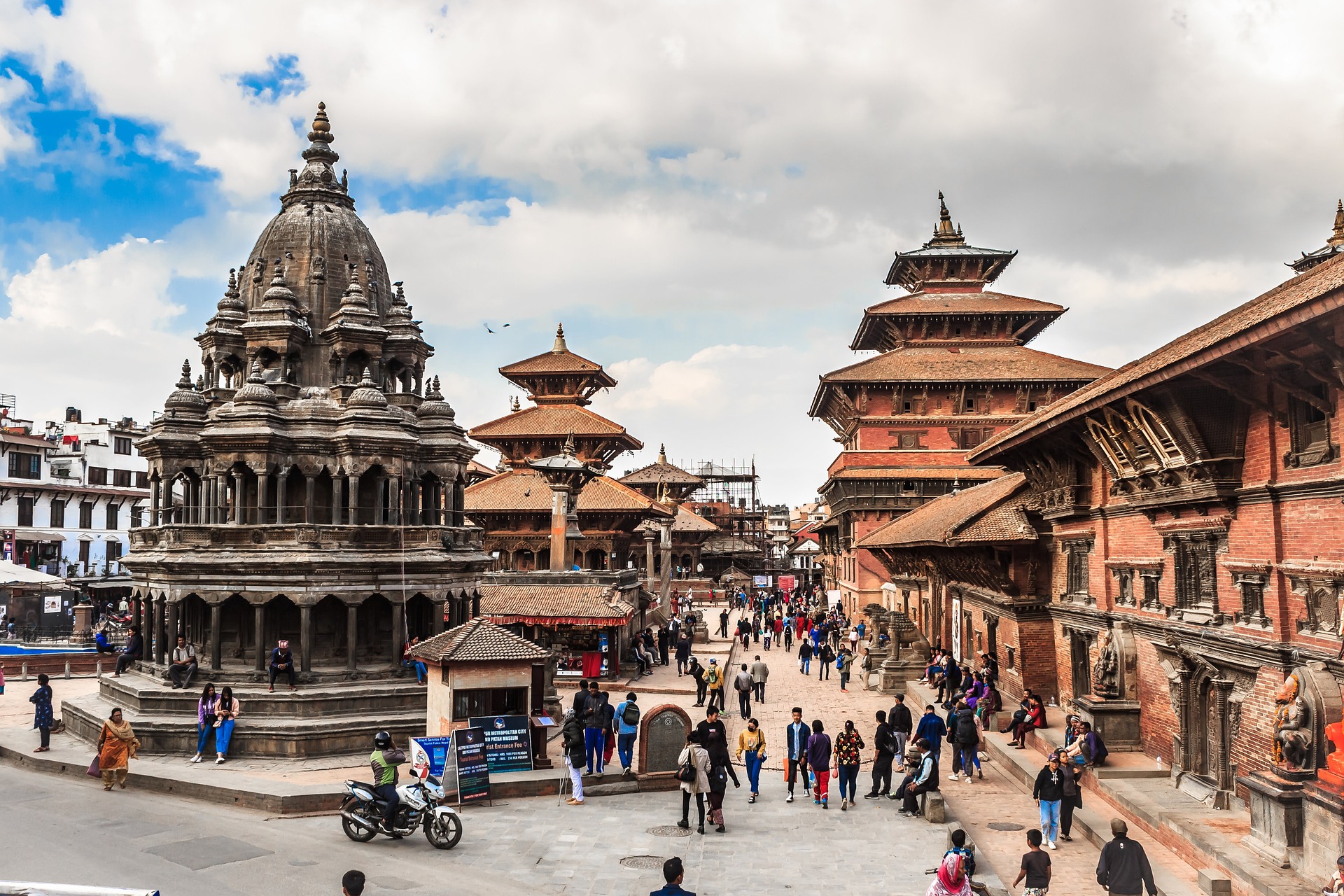
Day 3: Drive to Syabrubesi
Leaving early in the morning, you embark upon a seven-hour drive to Syabrubesi at the bottom of the Langtang Valley, the valley of glaciers. The second half is unpaved and the drive becomes quite rough. You might share a bus with goats and chickens. Sometimes, during the rainy season, the road is blocked by landslides.
The route is dazzling, passing through high ridges and with a marvellous panorama of the Himalayas that includes the Annapurnas, Ganesh Himal, Manaslu and the peaks of the Langtang range. There are many waterfalls and wild bee hives. You could also potentially see yellow-throated martins, Himalayan black bears or red pandas, which are endangered. There will certainly be no shortage of monkeys.
Day 4: Trek across the Bhote Kosi
Here, the trek begins properly. The trail takes you across the Bhote Kosi, which emanates from Tibet and lies in a deep gorge. You then climb through sub-tropical forests that teem with bird life, connecting to the trail from Syabru. One of these birds is the danphe, which is a colourful bird and the national bird of Nepal.
You will follow the river, ascending through uninhabited forests of oak and rhododendron, catching sight of langur monkeys if fortune smiles upon you. Vegetation becomes sparser as you go. You will camp overnight in a forest.
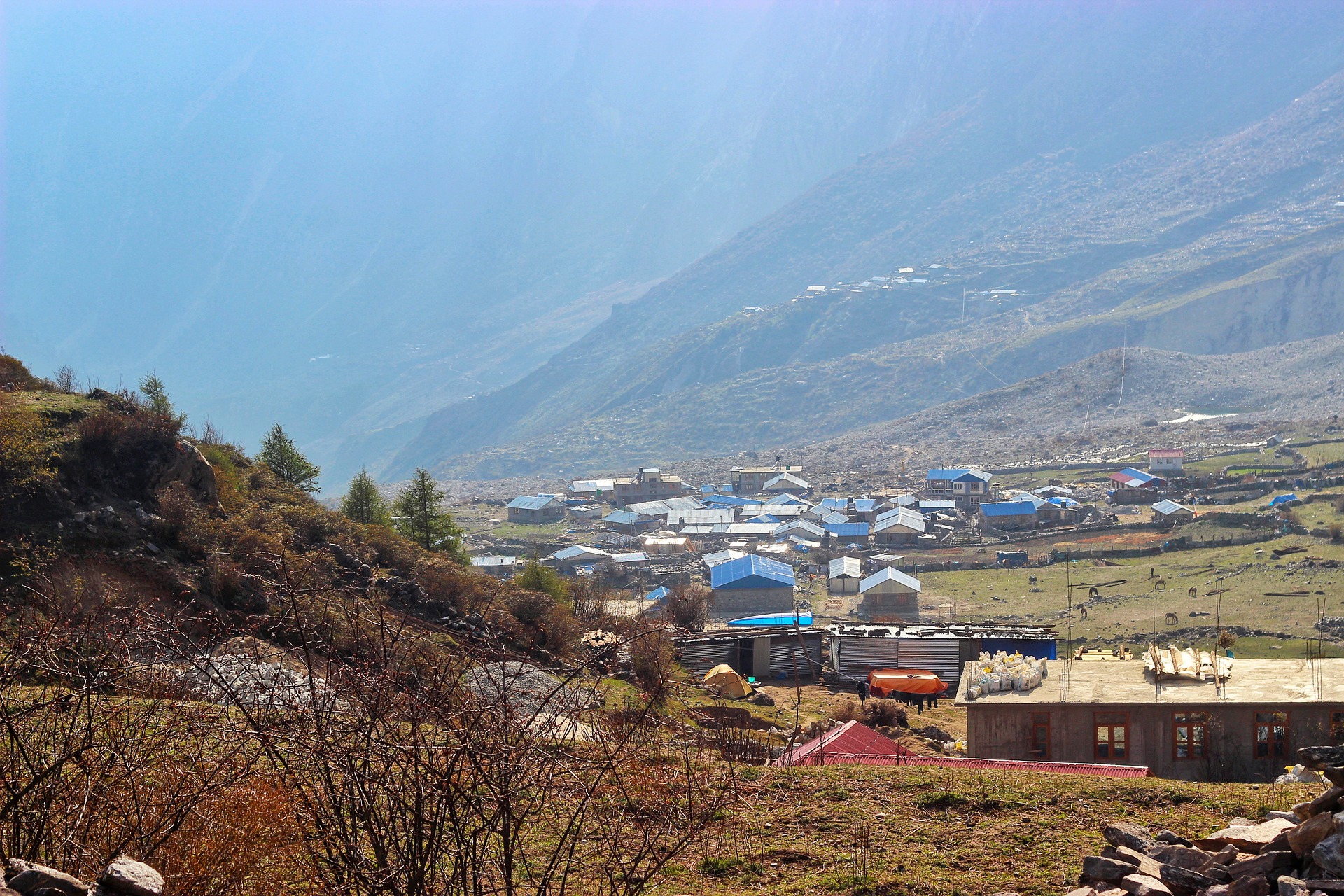
Day 5: Trek to Langtang
This day sees more climbing, with the occasional glimpse of Langtang Lirung visible through the trees. The trail leaves the forest at Ghora Tabela, now a Nepalese army post. The trail climbs comfortably, and the valley grows wider.
In summer, you will pass the temporary settlements of herders whose livestock grazes here. There are numerous chortens and mani walls, structures featuring inscriptions. In Tintin in Tibet, Captain Haddock was informed that you should always walk to the left of a chorten or demons will be released, but this was an invention of the author, so there is no cause for worry.
Shortly before the village of Langtang, there is a monastery for your delectation. The village is the headquarters of the Langtang National Park, which opened in 1976, the first in the Himalayas and the most unspoiled in Nepal. Houses there are of Tibetan style, with flat roofs and surrounded by stone walls.
Day 6: Trek to Kyangjin and onward
You will climb slowly through small villages and yak pastures. The valley opens, allowing for even better views. Having crossed a few small streams and moraines (patches of dirt or rock), before lunchtime, the trail arrives at the settlement of Kyangjin.
Here, there are facilities for the production of spiritual fulfilment and cheese: a small monastery and a famous government-owned factory. The factory makes Swiss cheese from yak milk and is supported by the Swiss government. Really, it should be called nak milk, as that is the female. This is just a small, three-roomed building, but it churns out prodigious quantities of cheese in summer. The snow-covered peaks in every direction make this spot very dramatic and beautiful.
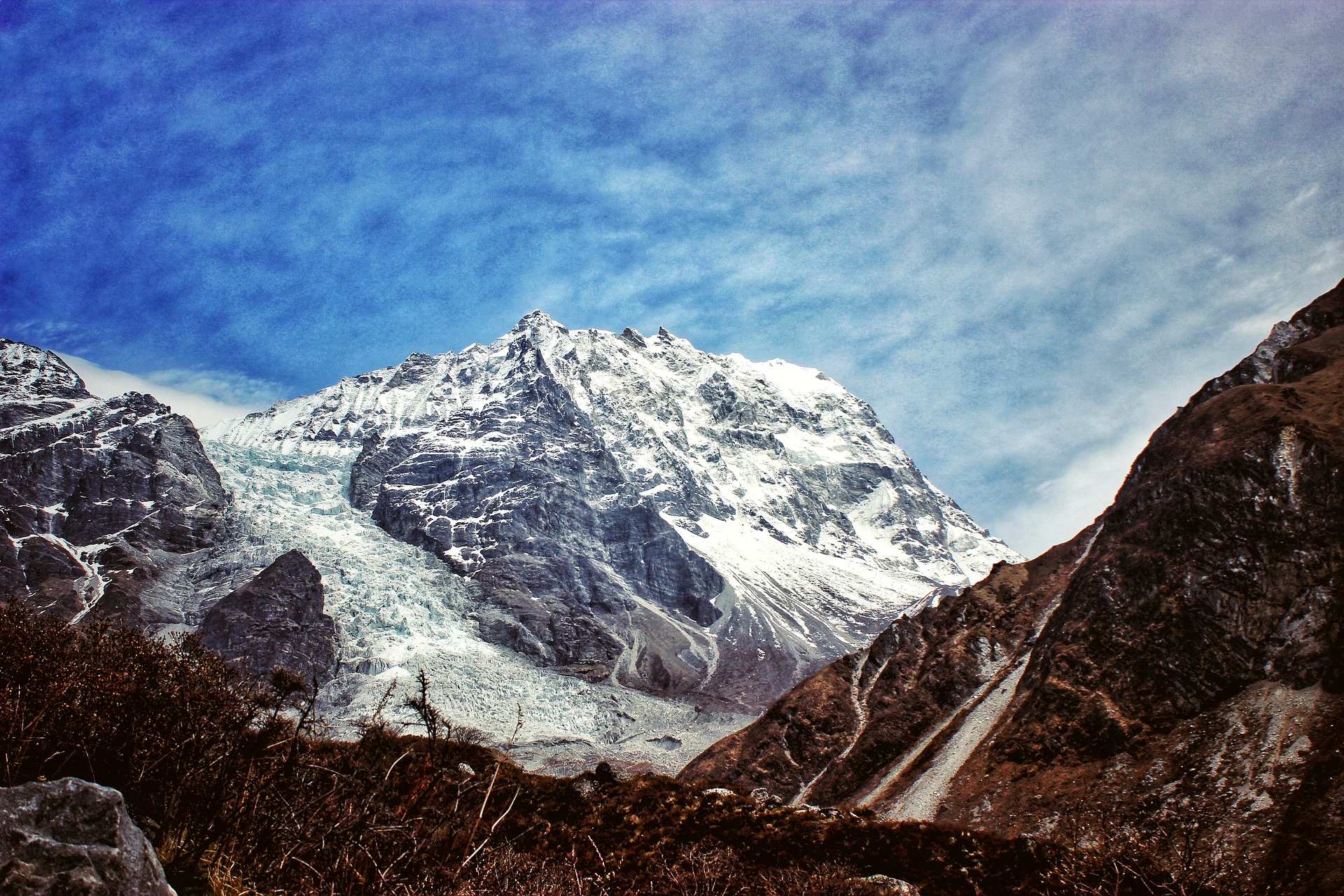
Day 7: Acclimatisation Day
This is a rest day which you will probably use to explore. The glaciers of Langtang Lirung are sensational. You could even summit Kyangjin Ri (14,209 feet), known locally as Brana Chumbo, which is immediately behind the village and provides a breathtaking 360-degree view of the Langtang peaks.
Day 8: Retrace route to Langtang
You will retrace your route towards Langtang village. The trail heads is down hill through forest following the river. You pass through ethnic Tamang settlements who strictly follow religious and cultural practices similar to that of the Tibetans.
Day 9: Return to Syabrubesi
You will continue the return journey, finishing at Syabrubesi. This is roughly a 5-hour walk and the easy trail goes mostly downhill through lush green vegetation.
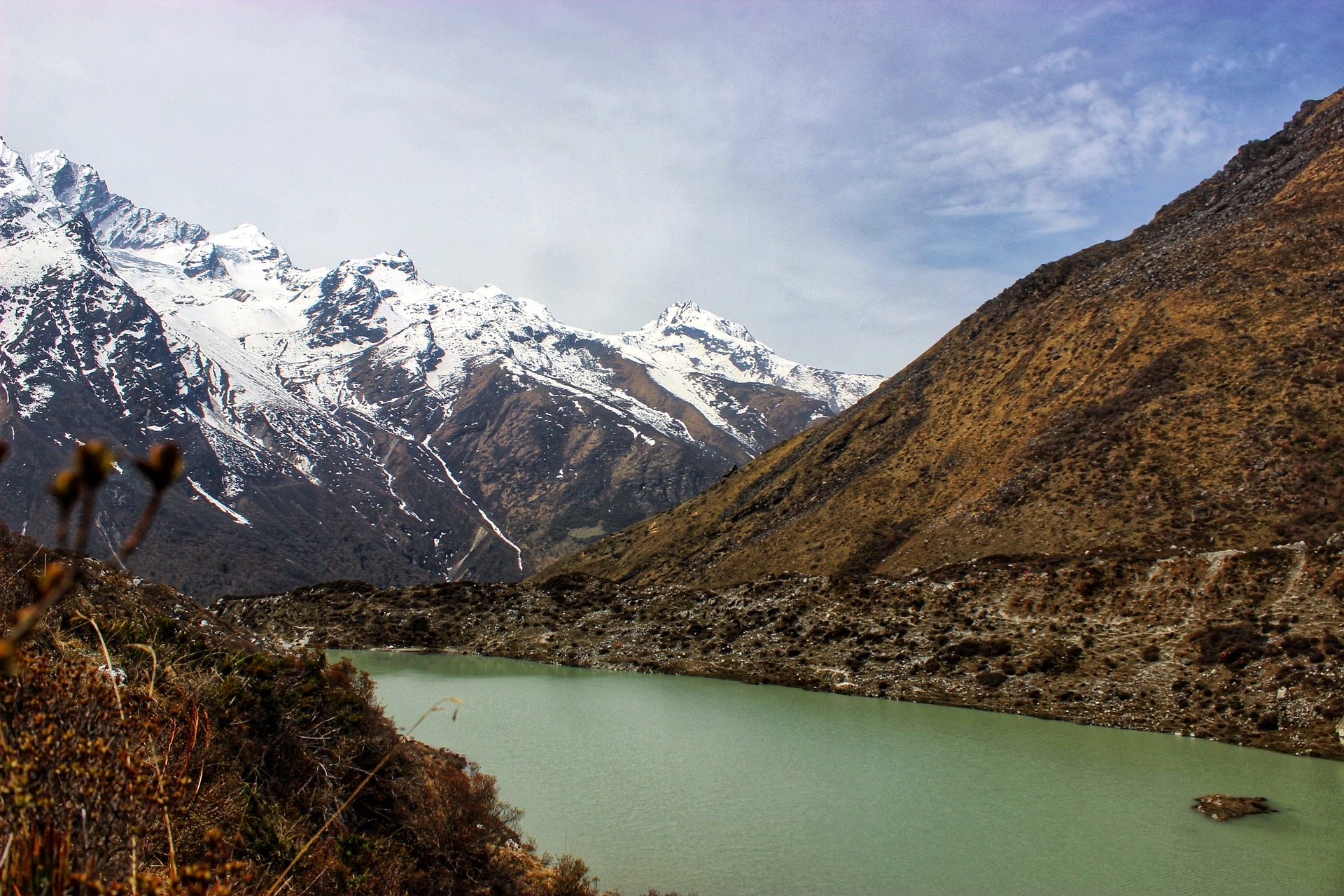
Langtang Valley Trek FAQ
How much does the Langtang Valley trek cost?
Costs for the Langtang Valley trek range from $1000 on the low-end to $2,000 on the top-end. Check out our list of the best trekking companies in Nepal.
Are permits required for the Langtang Valley trek?
You don't need a permit for the Langtang Valley Trek. However, you must be registered with the Trekkers Information Management system (TIMS for short) in order to do the trek. An entry fee of $30 is charged by the Langang National Park.
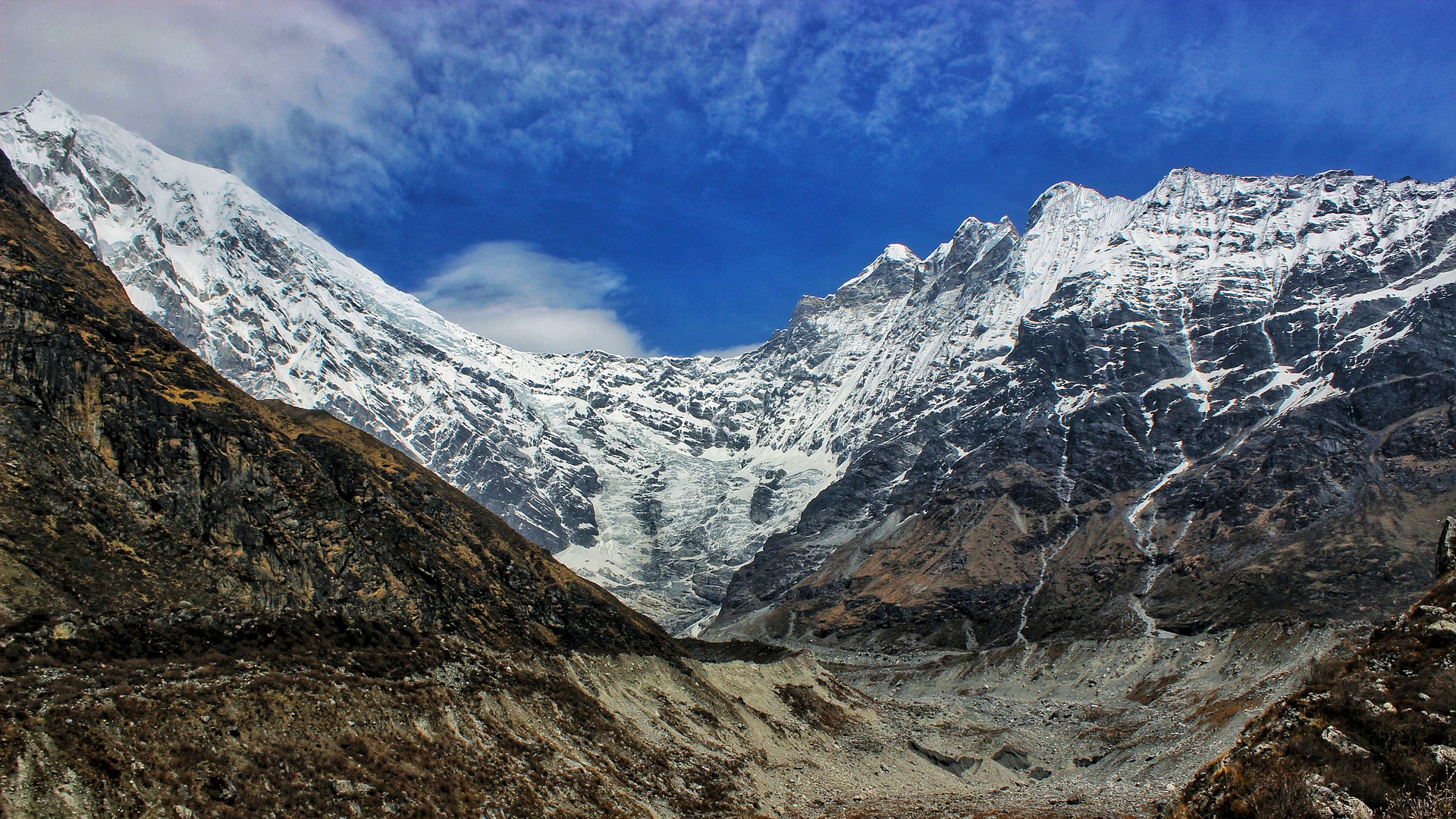
When is the best time to trek the Langtang Valley?
The best time to trek the Langtang Valley is Autumn, from mid-September to mid-December, and Spring, from March to May. These are considered the best seasons to hike in Nepal. when the sun is out during the day, but the nights are cold. Winter is also a possibility, if you don’t mind the cold.
Is altitude sickness a risk on the Langtang Valley trek?
Yes, altitude sickness is a risk because the Langtang Valley trek ascends to some high-altitude points. At its highest point, Tserko Ri, you will reach an altitude of 5,000 meters (16,347 feet). There are steep section on this trek where you will ascend fairly quickly.
Because of this, it is important to have a good understanding of the risks associated with high altitude trekking and how the body acclimatises to high altitude. We recommend you read our detailed article on Altitude Sickness and Acclimatisation.
How difficult is the Langtang Valley trek?
The Langtang Valley Trek is considered to be of moderate difficulty. There are steep sections that require a good level of fitness; however, the trek is relatively short and most people with a good attitude and high level of determination should be okay.
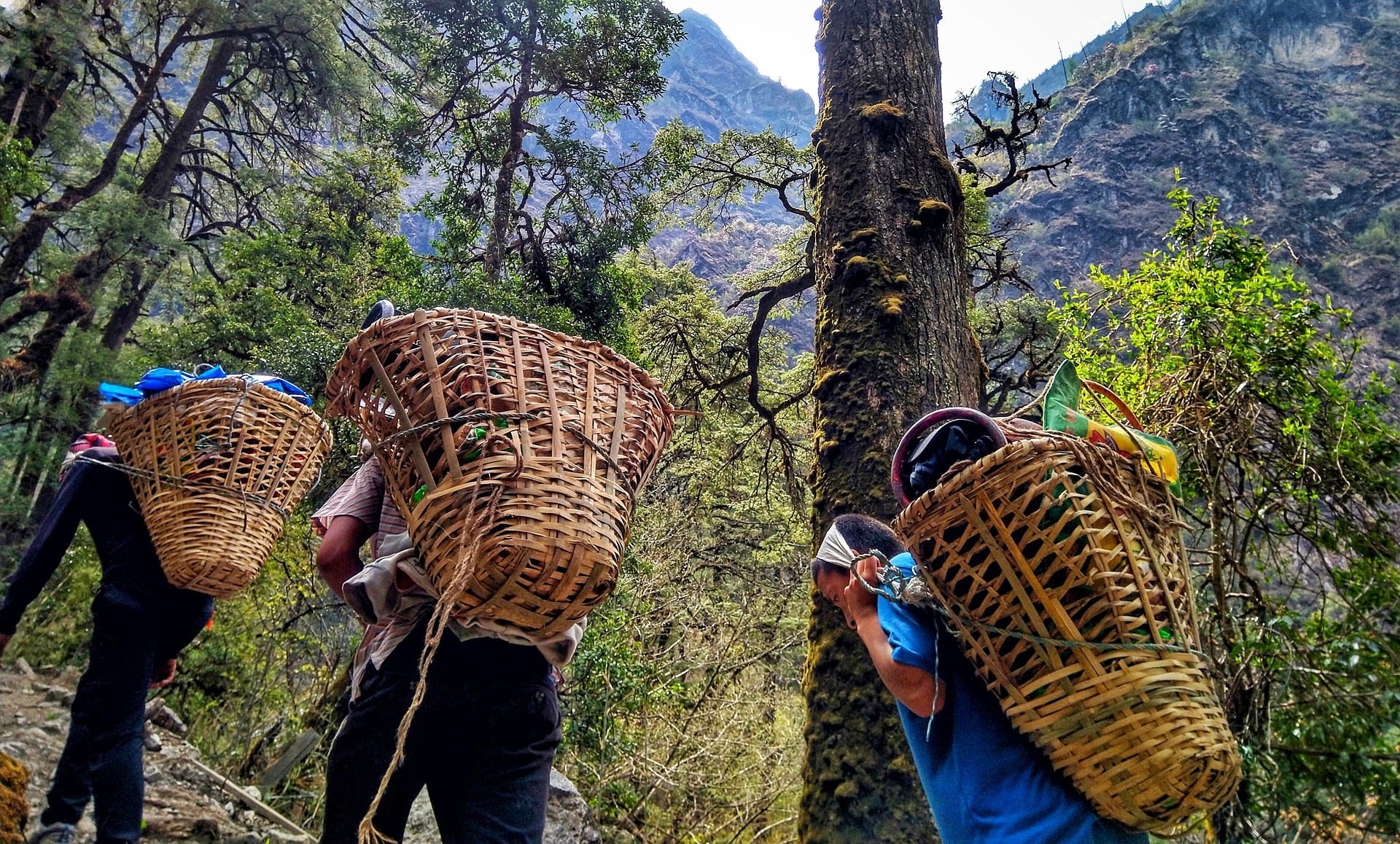
What gear do I need for the Langtang Valley trek?
Trekking the Langtang Valley requires a number of essential pieces of trekking gear and equipment. It is a long and moderately difficult trek, exposing you to a range of altitudes where temperatures fluctuate dramatically between night and day.
Much of your gear can be rented or bought in Kathmandu, but we strongly suggest bringing the most important pieces of gear and equipment with you.
To help you plan and prepare for your trek, we recommend reading our hiking packing list. Also, dont forget to take out good travel insurance for Nepal.
Are there any recommended guidebooks for the Langtang Valley trek?
Yes, there are several recommended guidebooks for the Langtang Valley trek. The Langtang Valley trek appears in many guidebooks which you use before and during your trip.
We highly recommend A Trekking Guide to Langtang: Gosainkund, Helambu and Tamang Heritage Trail by Sian Pritchard-Jones and Bob Gibbons. If this guidebook isn’t available, then Trekking the Tamang Heritage Trail of Nepal by Alonzo Lucius Lyons is very good too.
Continue browsing
See more information on Nepal. Or check out these other Nepal hiking articles:

